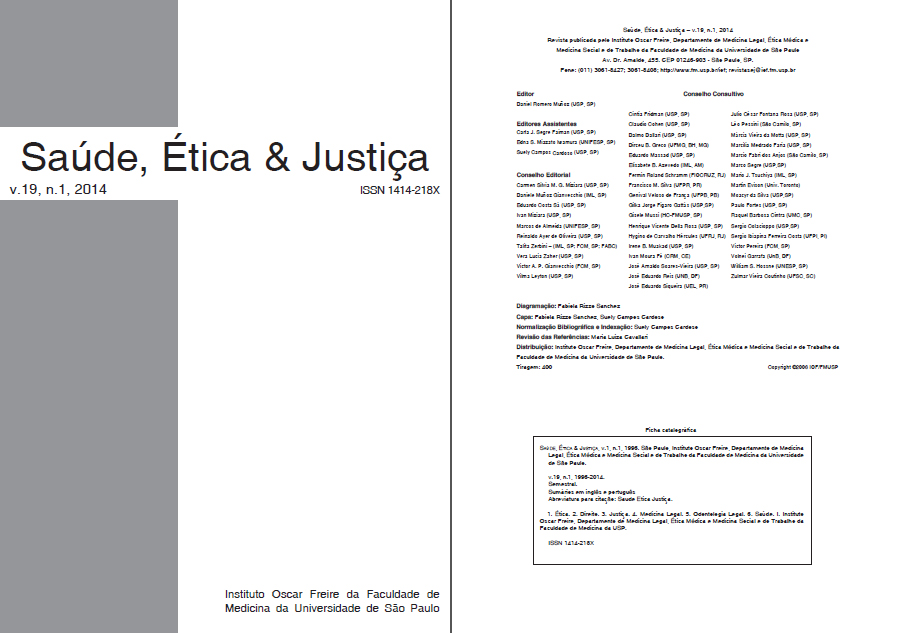Medical expert evaluation of work capacity of patients with lupus serositis
DOI:
https://doi.org/10.11606/issn.2317-2770.v19i1p12-20Keywords:
Serositis, Lupus erythematosus, Systemic, Work capacity evaluation.Abstract
Systemic lupus erythematosus (SLE) is a chronic inflammatory disease of autoimmune character and of unknown etiology that predominantly affects females at a frequency of 9:1 and it can reach various organs and physiological systems, most commonly the skin, joints and kidneys. However, lupus serositis has a significant impact on patients, with around 50% of cases having pericardial and pleural involvement whose clinical manifestations can result in an incapacity to work. The objective of this study was to determine when lupus serositis leads to disability, resulting in the granting of social security benefits. For this, the authors did a literature review on the subject, in order to evaluate the work capability of patients with lupus serositis. The lupus activity may result in the incapacity to work. Most people with SLE may have a normal productive life; however, some patients have a more complicated course and are no longer able to work. Some signs and symptoms of lupus serositis can show evidence of the disability. It is possible to conclude that a disability resulting from acute disease is usually total and temporary, requiring periodical reevaluations aiming for clinical and laboratorial control of disease progression.
Downloads
Downloads
Published
Issue
Section
License
Autores que publicam nesta revista concordam com os seguintes termos:
- Autores mantém os direitos autorais e concedem à revista o direito de primeira publicação, que permite o compartilhamento do trabalho com reconhecimento da autoria e publicação inicial nesta revista.
- Autores têm autorização para assumir contratos adicionais separadamente, para distribuição não-exclusiva da versão do trabalho publicada nesta revista (ex.: publicar em repositório institucional ou como capítulo de livro), com reconhecimento de autoria e publicação inicial nesta revista.



